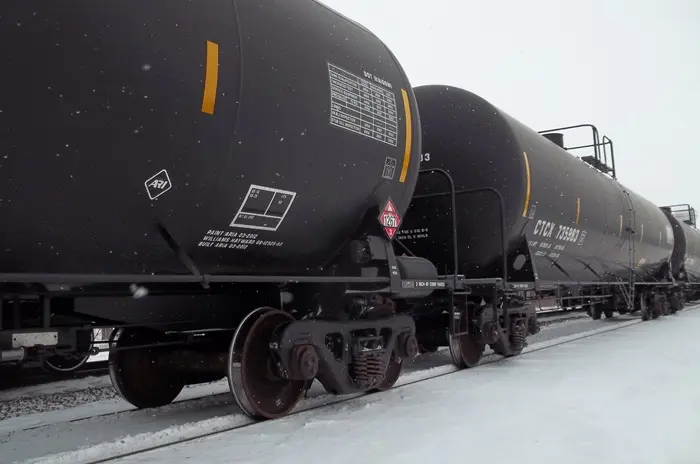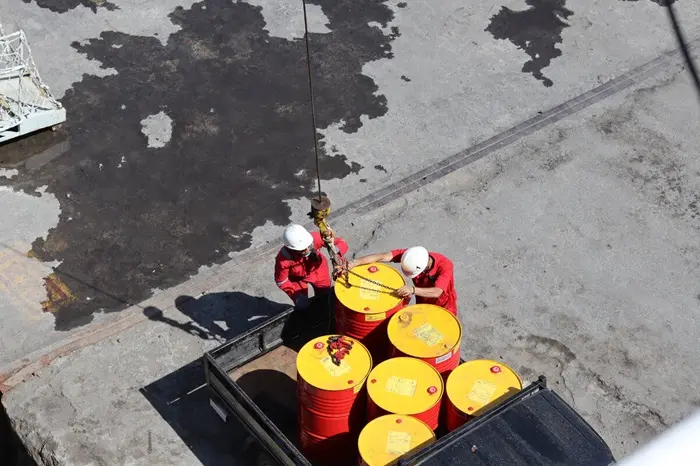Crude oil, the lifeblood of the global economy, comes in various grades and types, primarily distinguished by their physical properties. Among these, heavy crude oil and light crude oil are the most discussed. Understanding the differences between these two types of crude oil is crucial for industry professionals, policymakers, and investors. This article delves into the distinctions between heavy and light crude oil, exploring their characteristics, extraction methods, refining processes, market implications, and environmental impacts.
Characteristics of Heavy Crude Oil
Density and Viscosity
Heavy crude oil is characterized by its high density and viscosity. It has an API gravity of less than 20 degrees, making it thicker and more resistant to flow compared to lighter crude oils. The high viscosity means that heavy crude does not flow easily and requires enhanced recovery techniques for extraction.
Sulfur Content
Heavy crude oil often contains higher sulfur content, which classifies it as sour crude. Sulfur compounds are undesirable because they lead to the formation of sulfur dioxide during combustion, contributing to air pollution and acid rain.
Chemical Composition
Heavy crude is rich in larger hydrocarbon molecules and contains more impurities such as metals and nitrogen compounds. This complex chemical composition requires more intensive refining processes to produce valuable end products.
Characteristics of Light Crude Oil
Density and Viscosity
Light crude oil, in contrast, has a lower density and viscosity, with an API gravity of 31 degrees or higher. It flows more easily and can be extracted with simpler methods compared to heavy crude.
Sulfur Content
Light crude typically has lower sulfur content, classifying it as sweet crude. The lower sulfur content makes it more desirable for refining because it produces fewer pollutants during processing.
Chemical Composition
Light crude oil consists of smaller hydrocarbon molecules and fewer impurities. This simpler composition allows for more straightforward refining processes and results in a higher yield of valuable products like gasoline and diesel.
See Also: 5 Regions Producing The Best Crude Oil
Extraction Methods
Extracting Heavy Crude Oil
Enhanced Oil Recovery (EOR)
Due to its high viscosity, heavy crude oil extraction often requires enhanced oil recovery techniques. These include thermal recovery methods such as steam injection, which reduces the viscosity and allows the oil to flow more freely.
Hydraulic Fracturing
In some cases, hydraulic fracturing or fracking is used to extract heavy crude. This involves injecting high-pressure fluid into the rock formations to create fractures, enabling the oil to flow towards the production well.
Extracting Light Crude Oil
Conventional Drilling
Light crude oil can often be extracted using conventional drilling methods. The lower viscosity allows the oil to flow naturally to the surface without the need for complex recovery techniques.
Horizontal Drilling
Horizontal drilling is another method used to extract light crude. This technique involves drilling horizontally through the oil reservoir to increase the contact area with the oil, enhancing production rates.
Refining Processes
Refining Heavy Crude Oil
Complex Refineries
Refining heavy crude oil requires more complex refinery configurations. These refineries are equipped with coking units, hydrocrackers, and desulfurization units to handle the high levels of impurities and convert heavy fractions into lighter, more valuable products.
Upgrading Processes
Before refining, heavy crude oil often undergoes upgrading processes to improve its quality. These processes include hydroprocessing and thermal cracking, which break down large hydrocarbon molecules and reduce sulfur content.
Refining Light Crude Oil
Simple Refineries
Light crude oil can be processed in simpler refinery configurations. These refineries focus on distillation and catalytic cracking processes to separate and convert the lighter hydrocarbons into finished products.
Higher Yield of Valuable Products
The refining of light crude oil generally yields a higher proportion of valuable products such as gasoline, diesel, and jet fuel. This makes light crude more economically attractive for refiners.
Market Implications
Price Differences
The differences in properties and refining processes result in price variations between heavy and light crude oil. Light crude typically commands a premium price due to its higher yield of valuable products and lower processing costs.
Supply and Demand Dynamics
The supply and demand dynamics for heavy and light crude oil are influenced by several factors. Light crude is more in demand due to its ease of refining, while heavy crude supply is abundant but requires more investment in refining capacity.
Transportation Costs
Heavy crude oil is more expensive to transport due to its high viscosity. It often requires heating or diluent addition to facilitate pipeline transportation. In contrast, light crude can be transported more easily and at lower costs.
Environmental Impacts
Heavy Crude Oil
Carbon Footprint
The extraction and refining of heavy crude oil have a higher carbon footprint. Enhanced recovery techniques and complex refining processes consume more energy, leading to higher greenhouse gas emissions.
Pollution
Heavy crude oil has a higher sulfur content, which leads to increased emissions of sulfur dioxide during refining and combustion. This contributes to air pollution and acid rain.
Light Crude Oil
Lower Carbon Footprint
Light crude oil extraction and refining have a lower carbon footprint due to simpler extraction methods and refining processes. This results in lower greenhouse gas emissions.
Reduced Pollution
The lower sulfur content in light crude oil means fewer sulfur dioxide emissions during refining and combustion. This reduces air pollution and environmental impact.
Economic Considerations
Refining Investment
The choice between heavy and light crude oil has significant economic implications for refiners. Refining heavy crude requires substantial investment in complex refinery configurations and upgrading processes. In contrast, refining light crude requires less capital investment and offers higher returns due to the greater yield of valuable products.
Market Volatility
The prices of heavy and light crude oil are subject to market volatility. Factors such as geopolitical events, supply disruptions, and changes in demand can impact the price differential between the two types of crude oil.
Strategic Reserves
Countries with strategic petroleum reserves often diversify their crude oil holdings to include both heavy and light crude. This approach ensures a balanced supply and flexibility in refining options during emergencies or supply disruptions.
Technological Advancements
Enhanced Recovery Techniques
Technological advancements in enhanced recovery techniques have improved the extraction efficiency of heavy crude oil. Innovations such as steam-assisted gravity drainage (SAGD) and solvent-based extraction methods have reduced the environmental impact and increased production rates.
Refining Technology
Advancements in refining technology have also improved the processing of heavy crude oil. New catalysts and upgrading processes have enhanced the ability to convert heavy fractions into lighter, more valuable products.
Environmental Technologies
Environmental technologies, such as carbon capture and storage (CCS), are being developed to mitigate the carbon footprint of heavy crude oil extraction and refining. These technologies capture and store carbon dioxide emissions, reducing their impact on the environment.
Global Distribution and Production
Heavy Crude Oil Reserves
Heavy crude oil reserves are abundant in regions such as Canada, Venezuela, and the Middle East. These reserves are often located in challenging environments, requiring significant investment in extraction and transportation infrastructure.
Light Crude Oil Reserves
Light crude oil reserves are widely distributed globally, with significant production in regions such as the United States, Saudi Arabia, and Russia. The accessibility and ease of extraction make light crude a preferred choice for many producers.
Production Trends
Production trends for heavy and light crude oil are influenced by market demand, technological advancements, and geopolitical factors. The development of shale oil in the United States has increased the supply of light crude, while investments in heavy crude extraction continue in regions with large reserves.
Future Outlook
Demand for Cleaner Fuels
The global demand for cleaner fuels is expected to impact the future outlook for heavy and light crude oil. Regulations and consumer preferences for lower sulfur content and reduced emissions will drive the demand for light crude and refined products from complex refineries capable of processing heavy crude.
Technological Innovation
Continued technological innovation will play a crucial role in shaping the future of heavy and light crude oil. Advancements in extraction, refining, and environmental technologies will determine the economic viability and environmental impact of both types of crude oil.
Energy Transition
The transition to renewable energy sources and the push for decarbonization will influence the long-term demand for crude oil. While crude oil will continue to play a vital role in the global energy mix, the emphasis on sustainability will drive investments in cleaner extraction and refining processes.
Conclusion
Understanding the differences between heavy and light crude oil is essential for navigating the complexities of the oil industry. Heavy crude oil, with its high density, viscosity, and sulfur content, requires advanced extraction and refining techniques, resulting in higher production costs and environmental impact. Light crude oil, with its lower density, viscosity, and sulfur content, is easier to extract and refine, making it more economically attractive and environmentally friendly.
The market dynamics, technological advancements, and future outlook for heavy and light crude oil will continue to evolve. As the industry strives for cleaner fuels and reduced emissions, the balance between heavy and light crude oil production and refining will be shaped by innovation, regulation, and market demand. Understanding these factors will be crucial for industry stakeholders to make informed decisions and navigate the future of the oil industry.
Related topics:

































